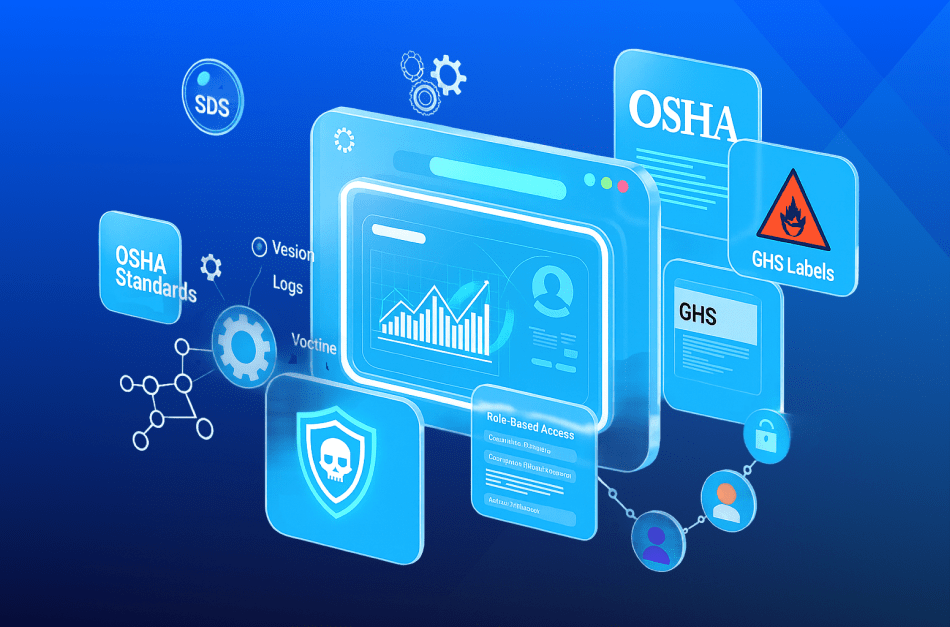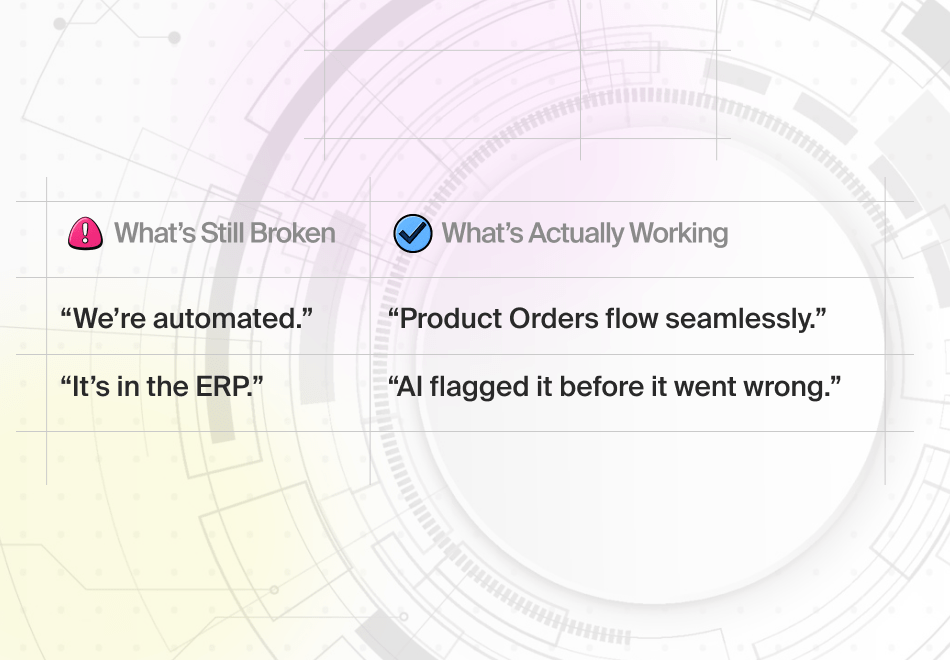At a Glance
- The chemical manufacturing industry is constantly scrutinized for its impact on the environment. Organizations in this industry are required to maintain numerous documents including safety data sheets and hazard labels with pictograms.
- Hazardous chemicals produced and used by the industry must be properly tracked and managed in compliance with the Environmental Protection Agency (EPA), Occupational Health and Safety Administration (OSHA) and others.
- The right ERP systems can help companies keep accurate records of these hazardous chemicals, in order to meet changing requirements.
Chemical Manufacturers – Managing Compliance
The chemical manufacturing industry is required by law to responsibly use, transport and dispose of hazardous chemicals.
According to a 2016 Harvard University report, “There are currently more than 85,000 chemicals in the US that make up the products in our daily lives and few, besides medications and pesticides, have been assessed thoroughly for safety.”
While prescription drugs and pesticides are carefully examined for their effects on humans and the environment, few other chemicals were not. That changed in 2016 with the Frank R. Lautenberg Chemical Safety for the 21st Century Act. The Act gives the EPA, “the authority to ban new and existing chemicals that pose a risk to human health and the health of the environment.”
Manufacturers are an integral part of the chemical value chain. The overall supply chain— from raw materials to finished products—now requires hazard visibility that was lacking until recently.
How can manufacturers meet these compliance standards and document what happens to hazardous chemicals?
One way is through the use of an enterprise resource planning (ERP) software system that makes record maintenance, compliance and visibility easy to maintain. A reliable ERP system is no longer an option but a requirement for chemical companies wanting to act proactively and avoid environmental or human mishaps.
Adding Xcelpros’ Integrated Chemical Management solution to the One Microsoft Ecosystem provides a comprehensive way of ensuring compliance. ERP components cover Supply Chain, Finance, Manufacturing, Quality, Document Management and Chemical Data and Documents.
Being proactive
Business processes would be simpler for bulk chemical and toll manufacturers if they could regulate hazardous substances using inventory receipts from a purchase order or production order system. Dangerous chemicals can be monitored more closely, though, when using an integrated chemical management system that tracks each chemical in every stage from raw material to finished product and wastes.
Unified systems like ERPs can help identify hazardous substances and evaluate them. Manufacturers are then informed of the risk levels regarding the use and distribution of their chemical products.
Identifying these hazardous substances early also allows manufacturers to act proactively, resulting in better safety.
Book your consultation to learn how an ERP system can help handle hazardous chemicals.
Developing a Prototype/ Standard Operating Procedure for Worker Safety
Even after manufacturers implement hazardous chemical safety procedures, theres still room for error. Mishandling and mismanaging these chemicals can jeopardize workers’ safety. Since working with these chemicals is a part of the job, production and distribution becomes a serious business challenge. Documenting safe handling steps and ensuring dangerous products meet all current regulations helps protect the companies when accidents occur.
Microsoft Dynamics 365 and its suite of business tools integrates into SharePoint and OneDrive. SharePoint is a document collaboration system. OneDrive is more storage oriented. Combined with Dynamics 365, they provide the ability to develop a standard operating procedure or prototype process to handle chemicals. The result is a series of documents that help avoid chemical accidents and enhance worker safety on the shop floor.
Better Equipment Maintenance
Documenting equipment maintenance in a chemical plant is a tedious task. Microsoft Dynamics 365 boosted with Internet of Things (IoT) sensors eliminates much of this drudgery. It lets workers know when to take preventive actions. These maintenance “calls-to-action” are generated automatically by D365 systems. By removing the potential of errors from manual entry, the automatic notifications also boost regulatory compliance. This integrated system also lets chemical manufacturers create a complete equipment maintenance, repair and operations plan.
Figure: 1How an ERP System Helps Manage Hazardous Chemicals

Systematic Record Maintenance
Many chemicals used by manufacturing companies require detailed labels. These labels include their chemical composition, risk factors, expiration dates, safety procedures and special handling instructions. Government agencies require a consolidated record listing the chemicals, their quantities, distribution, costs, etc.
Manually tracking the massive volume of data in legacy systems leads to errors. Microsoft Dynamics 365 with Integrated Chemical Management is one way to properly maintain that chemical data. Information is made visible at the individual chemical or consolidated level. Chemical companies are assured of safely using, distributing and disposing of their hazardous chemicals through an automated workflow that makes it easy to add and edit chemical data.
Meeting Compliance Standards
The ERP systems described earlier apply to regulations at many levels, not just those from the federal government. They can include notifications of additional requirements based on the shipping destination. That location can be one community within a nation or a different country.
Chemical companies looking for an ideal ERP solution that helps meet local and international documentation requirements should take a close look at what D365 and ICM have to offer.
According to the 2017 Hazard Communication Survey:
- 70% of participants pointed to compliance as the single largest priority for their company.
- 80% of them cited monthly obligations to create, print, or affix workplace labels to containers in their inventory as a challenge.
Microsoft Dynamics 365 and ICM provide an embedded chemical management solution for storing chemical data. That data becomes a globally harmonized System of Classification and Labelling of Chemicals (GHS) compliant labels and Safety data sheets. Using D365 and ICM is an ideal way to reduce GHS-related compliance issues.
Summary
An advanced ERP system like Microsoft’s D365 can easily become the backbone of an organization’s hazardous chemical record keeping. This sophisticated software system helps the company function and grow while also keeping the environment and communities safe. Microsoft’s Chemical Manufacturers Supply Chain solution provides a cutting-edge system to ease record maintenance, streamline the overall chemical supply chain, track inventory and warehouse management processes and create a platform for productivity and growth.
Key Takeaways
- Integrating chemical data into an ERP system is necessary for chemical manufacturers to comply with rules and regulations from many sources.
- Microsoft’s integrated ERP software working with ICM provides a smooth flow of records. It tracks hazardous chemicals, prints GHS labels and generates safety data sheets.
- Chemical manufacturers concerned about worker safety, protecting the environment and avoiding government penalties will only benefit from the right ERP system.
Explore our Products page to learn about the different ERP Solutions available to jumpstart your evaluation process.








